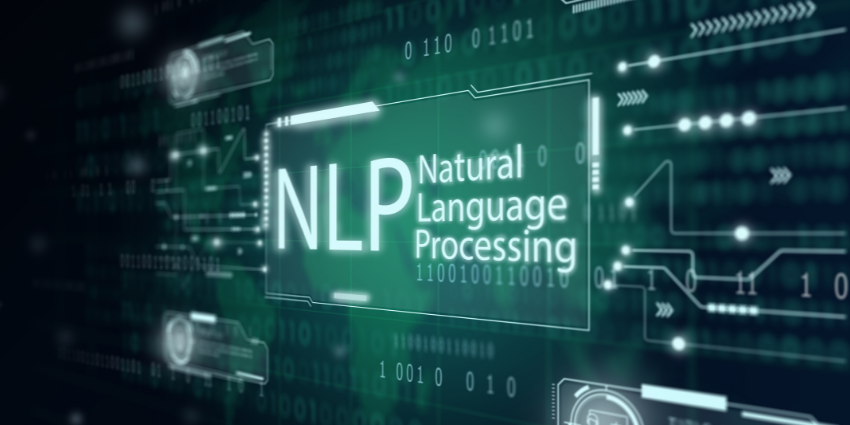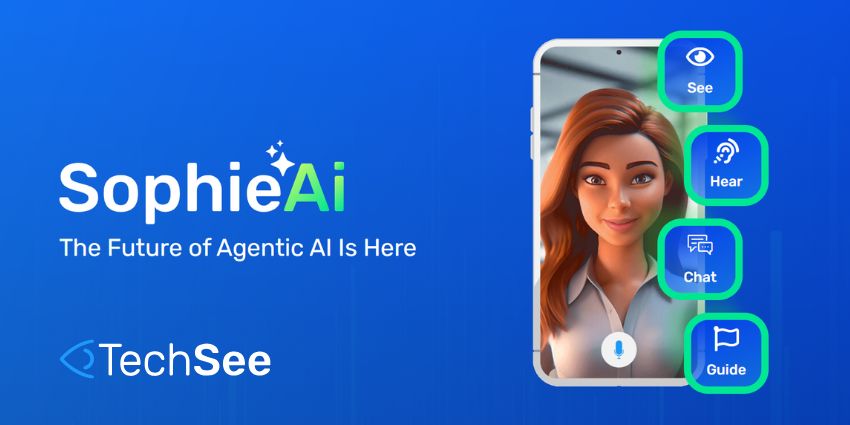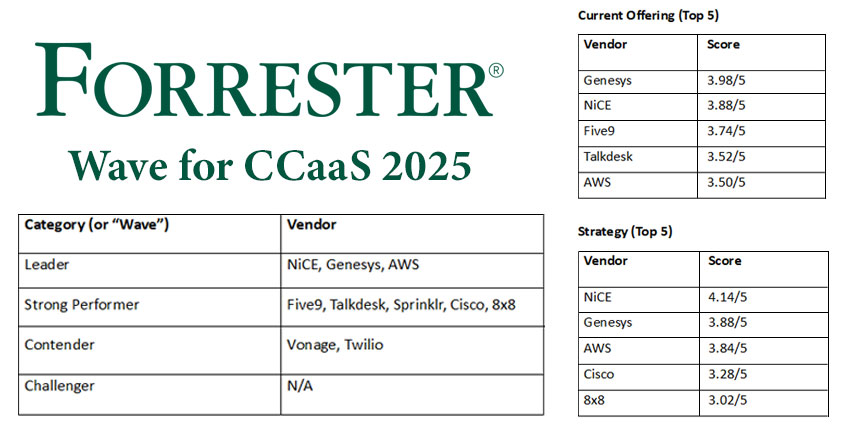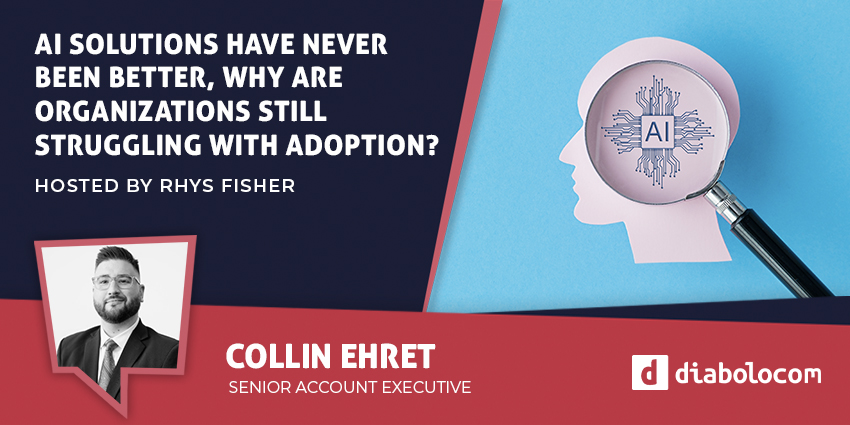What is NLP, and how is it changing the customer experience landscape forever?
How we look at artificial intelligence as a solution for customer service is changing. Until recently, AI was best suited to logical, data-driven tasks, like processing information and automating simple workflows. However, language-based AI innovations have introduced a new era of creative tools.
Many of the most exciting innovations in the contact center, such as solutions for sentiment analysis, intelligent routing, and generative AI bots, all use NLP. These transformational technologies fundamentally change how companies interact with consumers and run their contact center operations.
Here’s your complete guide to NLP.
What is NLP? Defining Natural Language Processing
So, what is NLP?
NLP, or natural language processing, refers to a branch of computer science focused on how computer programs can understand and process human language. It’s the branch of artificial intelligence concerned with allowing computers to understand human words and speech.
NLP isn’t an entirely new phenomenon. The concept has existed for over 50 years, stemming from the study of linguistics. However, the potential of NLP has evolved considerably in recent years.
Every day, more people are interacting with NLP technologies. We encounter these tools when speaking to a voice-operated smart speaker, navigating an intelligent IVR system, or using dictation software. NLP technology is increasingly becoming a core component of the contact center.
Leading contact center vendors embed NLP capabilities into their analytical tools, virtual assistants, and chatbots to power more convenient, streamlined interactions.
These solutions are becoming more advanced by the day, as evidenced by the impact of ChatGPT. ChatGPT and other generative AI tools are powered by NLP, deep learning, and significant language models. With NLP, companies can empower agents, serve customers, and even create bots capable of providing human-level responses to queries.
How Does NLP Work?
Essentially, NLP technologies provide computers with the tools they need to understand language as humans do. Just as humans have eyes and ears to collect and process information, computers have sensors and programs that allow them to gather and process input.
The “brain” of an NLP solution combines computational linguistics with statistical, deep learning, and machine learning models. These allow computers to process text or voice data and understand each interaction’s context, sentiment, and intent.
Let’s take a closer look at the core components of an NLP program:
- Computational linguistics: The science of understanding and constructing human language models. Researchers use semantic and syntactic analysis to create frameworks that help machines understand and process human language. Tools like text-to-speech synthesizers, language translators, and speech recognition software are all based on this technology.
- Machine learning: With machine learning, computers can evolve, gathering data to help them understand human input. ML tools allow bots to gradually better understand conversational nuances, such as grammar usage, sarcasm, and metaphors.
- Deep learning: A crucial part of generative AI, deep understanding teaches computers how to think like humans. It involves using neural networks and large data models to give computers their own “brain.” With deep learning, computers can recognize and classify patterns in complex text and speech input data.
The Phases of Natural Language Processing
There are several primary phases involved in natural language processing. The first is the “pre-processing” phase, followed by training and algorithm development.
Data preprocessing involves cleaning and preparing data for machines to understand it. Text vectorization and tokenization transform text and speech into data a machine can understand. Developers also use various strategies to optimize the data a device receives, such as:
- Stop word removal: Automatically remove words like “for” and “with” from sentences to help machines focus on the most valuable terms.
- Lemmatization and stemming: Shrinking common words to their root form, such as turning “starting” into “start,” to improve understanding.
- Part-of-speech tagging: marking words based on their purposes in speech, such as tagging verbs, nouns, and adjectives.
Companies can also use “NLP tasks” to help process data. Common examples include machine translation, speech recognition, and word-sense disambiguation. These tasks help break human text or speech down into smaller parts that are easier to analyze.
Developers then use pre-processed data to train NLP to do specific tasks. Early versions of NLP solutions relied heavily on rule-based systems. This allows computers to analyze information based on pre-set rules and algorithms. Today’s solutions are progressing toward NLP training based on machine learning, neural networks, and deep learning technology.
Once systems are trained, they’re implemented into a specific environment, such as a contact center, IVR system, or chatbot. These tools are then optimized based on continuous exposure to new data.
What is NLP Used for in the CX Industry?
Natural Language Processing has many potential use cases relevant to various industries. Businesses today are constantly creating vast volumes of unstructured, text-heavy data and need an efficient way to process it. A lot of the information we produce every day consists of natural human language, which is difficult to process and analyze manually.
The rise of Natural Language Processing gave companies a new way to review and use text and speech data effectively. In the modern world, NLP is used for everything from creating conversational bots, analyzing the voice of the customer, and classifying or extracting text.
In the world of customer experience, NLP converts unstructured data into insights, and resources companies use can detect patterns across data sets, interact with customers at scale, and even deliver exceptional self-service solutions.
Use cases for NLP in customer experience settings include:
Sensitive Data Redaction
Privacy and security standards in the contact center are constantly evolving. Businesses in highly regulated industries process, sort, and retrieve large volumes of sensitive information daily. Reviewing these documents manually for compliance purposes would require significant resources.
However, companies can automatically redact personally identifiable information (PII) and protect private data with NLP technology. Solutions can immediately recognize PII and remove it from the documents stored for training and auditing purposes.
Automating Customer Service Processes
NLP solutions are excellent at automating routine manual tasks in customer support. Virtual assistants and IVR systems integrated with NLP technologies can automatically assess the reason for a customer’s call and use that data to route contacts to the correct agent.
Intelligent NLP tools can also use text classification strategies to automatically tag customer support tickets based on language, sentiment, and urgency, then route them to the appropriate agent pool. NLP solutions can even automatically upload relevant data to CRMs and other knowledgebases, reducing the work an agent needs to do during a call wrap-up.
Enhancing Business Insights
Companies use NLP tools to gain an educated insight into a customer’s experience throughout the purchasing and service journey. Powerful NLP tools can scan for specific words and phrases, gauging customer mood and emotion without needing written feedback.
NLP systems can also use sentiment analysis to analyze the language used in conversations. This can help companies determine which customers are most likely to churn or leave a negative review. Some NLP solutions can even use text classification to quickly sort through customer surveys and track trends in customer experience issues and requests.
Creating self-service chatbots
Chatbots rely on NLP to process customer input and deliver accurate responses. Companies can use NLP-powered tools to build their bots, capable of recognizing voice and text-based commands. They can also use machine learning algorithms to improve the quality of their bots over time, consistently teaching tools to become more efficient.
Intuitive bots trained with NLP technologies can rapidly recognize the reason for a customer’s query and rapidly respond to questions with information drawn from extensive knowledge bases. Today’s generative AI bots can even respond to queries in a more human, creative manner, using large language models and APIs.
Employee Guidance
NLP solutions, such as generative AI chatbots and virtual assistants, can provide employees with step-by-step assistance. Using sentiment and syntactic analysis, virtual assistants can rapidly gather information about a caller and use that to deliver real-time coaching to agents.
This could include rapidly generating scripts for salespeople to follow, suggesting responses to customer queries, or providing advice on managing a call. These tools can also assist agents with troubleshooting issues and rapidly accessing database knowledge during conversations.
Text summarization
Text summarization is one of NLP technologies’ most valuable yet straightforward use cases. NLP tools can digest vast volumes of digital text and convert it into meaningful insights for business leaders and their teams. Solutions like this can make it easier to draw information from interactions with customers, meetings, and customer success strategies.
These solutions can also help to create more advanced customer profiles for CRM systems, helping agents to personalize customer experiences.
Machine translation
Global companies serving a broad audience of different consumers can also benefit from NLP technologies. Solutions like Google Translate and Microsoft Translator use Natural Language Processing to convert spoken words into other languages.
These tools are becoming more accurate, learning to adapt to different dialects and regional accents. This could help to ensure that every contact center can deliver global support, regardless of which languages its agents can speak.
What is NLP Doing for the Modern Contact Center?
NLP technology effectively improves the way humans and computers interact with each other. By enabling computers to understand the human language fully, NLP changes how we use technology as consumers and employees.
In the contact center, NLP technologies are helping companies to become more efficient, productive, and cost-effective. They’re offering new opportunities for self-service support driven by ever-more intuitive chatbots and virtual assistants. Plus, they’re actively improving employee experiences.
With NLP solutions to automate standard processes, reduce customer support requests, and deliver step-by-step agent guidance, contact center agents can thrive.
Of course, there are still challenges to implementing NLP in the contact center. However, innovations in recent years are driving the evolution of this technology.
Developers and AI experts are still working on making these technologies more accurate and efficient. Companies like Google and Meta have released their own NLP libraries to help train tools. New solutions are now more capable of understanding human language, tone, and inflection.
At the same time, solutions like OpenAI’s Chat GPT technology are creating new opportunities to build more intuitive, human-like bots with NLP technology.
As large language models, generative AI, and natural language understanding algorithms evolve, NLP tech is growing.
Virtually every leading contact center vendor now has its own NLP tools, from intelligent routing systems to analytics platforms and chatbot builders.
The Future of NLP in the Contact Center
NLP unlocks a host of unique opportunities for the modern contact center.
NLP tools give companies new ways to serve their customers, manage data, and empower employees.
Countless solutions have emerged in the contact center landscape. These include NLP-powered feedback analysis tools for tracking customer satisfaction scores to sentiment analysis tools. Moreover, new open codebases, libraries, and APIs make advanced NLP solutions more accessible.
Today, many of the world’s top contact center vendors use NLP and generative AI to rework the development of bots, virtual assistants, and other automated tools.
While the ability to speak more effectively to bots won’t reduce the need human contact center agents, it will help companies operate more effectively. Out-of-the-box NLP solutions in the contact center will drive a new customer service and support era.
It will empower us to understand our customers better, enhance the buyer journey, and augment human teams’ performance worldwide.







